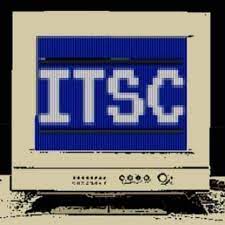
 The holidays, with their twinkling lights and swirling snow, can be a gift for hackers and a lump of coal for companies. We don’t want your cyber stocking filled with coal at Christmas, which is why we’re talking to experts across the spectrum about ways managed service providers (MSPs) can keep their customers safe. This is part two of that conversation.
The holidays, with their twinkling lights and swirling snow, can be a gift for hackers and a lump of coal for companies. We don’t want your cyber stocking filled with coal at Christmas, which is why we’re talking to experts across the spectrum about ways managed service providers (MSPs) can keep their customers safe. This is part two of that conversation.
Cornerstones of holiday security
According to Milankumar Rana, head architect at software company Headstorm, maintaining a competitive edge during the holidays requires a comprehensive, proactive approach. “To maintain a competitive edge, MSPs and CISOs must establish a holiday-specific security strategy that prioritizes proactive fortification and swift response preparedness,” Rana emphasizes. He recommends verifying multi-factor authentication across all privileged systems, strengthening identity and access management policies, and activating anomaly-based detection. Ensuring offline and immutable backups is also imperative, along with implementing explicit holiday on-call rotations and pre-approving emergency containment measures. Enhanced email security through link and attachment sandboxing rounds out his recommendations. Through automation, robust identification restrictions, and meticulously practiced incident response protocols, Rana notes, firms can markedly diminish their vulnerability during this exceptionally high-risk period.
The simple holiday reset
Cybersecurity specialist Nandor Katai offers a contrarian perspective that challenges conventional wisdom. During the holiday season, he argues, most organizations instinctively focus on adding more tools and processes to stay protected. In reality, this is the perfect time to do the opposite. “Before layering on new security products, MSPs and CISOs should use this period to review and streamline what’s already in place,” Katai suggests. He advocates for a simple holiday reset that begins with taking inventory of all tools, software, and active services to identify what’s outdated, unused, or forgotten.
The next step involves removing or retiring anything that no longer serves a clear purpose—old trials, duplicate services, orphaned accounts, or tools introduced during past emergencies. Katai also recommends evaluating workflows and user access to ensure teams aren’t relying on unnecessary platforms that increase the attack surface. This cleanup step, he notes, is one of the most overlooked parts of holiday cybersecurity prep. Streamlining the tech stack gives MSPs a far stronger foundation for deploying new security measures, reduces alert fatigue, and minimizes the number of systems that need patching or monitoring during a period when staffing is often thin. A clean, organized environment makes every protective control more effective—especially during the holidays, when phishing, credential misuse, and software exploits tend to spike.
The employee shopping risk
The ever-present issue of employee bargain-hunting while on corporate networks and devices has taken on new life this year. While holiday-shopping phishing targeting the employee-shopper overlap isn’t new, the level of personalization involved is now fooling even the most security-savvy internet users. Combining this personalization with bargain-hunting behavior, scam operators are shifting away from long-term stores to ephemeral coupon sites. Personalized emails and texts direct users to these sites, offering one-day deals, intrusive pop-ups, and minimal inventory—all designed to evade takedown efforts. Since many devices and emails are used for both personal purchases and business access, the risk surface expands significantly.
Bottom line—be aware and don’t gift the hackers a chance to break into your customers’ networks.
This post originally appeared on Smarter MSP.

